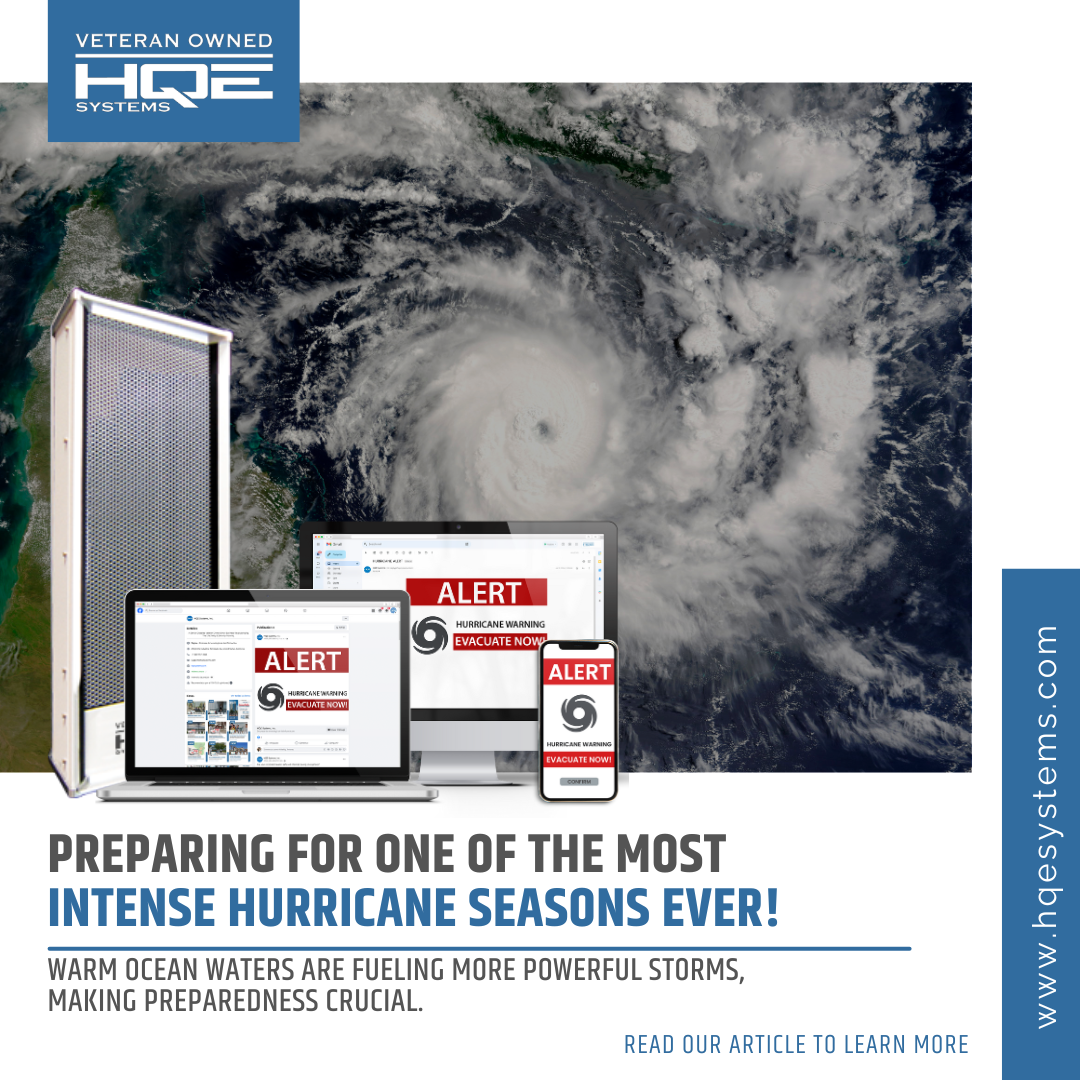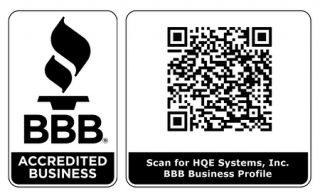Bracing for the 2024 Hurricane Season
The 2024 Atlantic hurricane season is expected to be one of the most intense on record, with experts predicting a significant increase in the number of named storms and major hurricanes. This alarming forecast is driven by rising ocean temperatures, which fuel more powerful storm systems. As we face this heightened threat, the importance of preparedness cannot be overstated. In this blog, we’ll explore the potential dangers of this hurricane season, the challenges in responding to such events, and the innovative solutions available to enhance our readiness. Keep reading to discover how you can protect your community and stay safe during this unprecedented hurricane season.
The Science Behind Increased Hurricane Activity
Increased Hurricane Activity
Rising ocean temperatures are significantly contributing to the predicted increase in hurricane activity. Warmer waters provide more energy for storm systems, leading to more frequent and intense hurricanes. According to NOAA, the 2024 Atlantic hurricane season is expected to see above-normal activity, with an increased number of named storms and major hurricanes. Research from North Carolina State University discusses how these conditions set the stage for potential record-breaking storms. The Mann Research Group also highlights the implications of these changes, noting the increased likelihood of extreme weather events and the need for robust preparedness measures.
Rising Ocean Temperatures
The primary driver behind the anticipated increase in hurricane activity is the rise in sea surface temperatures. Hurricanes draw their energy from warm ocean water, which fuels their development and intensification. As global temperatures rise due to climate change, sea surface temperatures also increase, creating more favorable conditions for hurricanes to form and strengthen.
Energy for Storm Systems
Warmer waters contribute to the energy available for storm systems, resulting in more powerful and potentially destructive hurricanes. This additional energy allows storms to develop more rapidly, increasing the chances of them reaching higher categories of intensity. The relationship between sea surface temperatures and hurricane intensity is well-documented, and this season’s predictions underscore the importance of monitoring ocean temperatures.
Predictions for the 2024 Season
The NOAA has forecasted an above-normal hurricane season for 2024, with an increased number of named storms and major hurricanes. This prediction is based on various climate models and historical data, which indicate that the current oceanic and atmospheric conditions are conducive to heightened hurricane activity.
above-normal hurricane season for 2024, with an increased number of named storms and major hurricanes. This prediction is based on various climate models and historical data, which indicate that the current oceanic and atmospheric conditions are conducive to heightened hurricane activity.
Setting the Stage for Intense Storm Activity
Research from North Carolina State University elaborates on how the combination of warm sea surface temperatures and favorable atmospheric conditions can lead to record-breaking storms. Factors such as low wind shear and high humidity levels in the atmosphere also play a crucial role in the formation and intensification of hurricanes.
Implications of Increased Hurricane Activity
The Mann Research Group highlights the broader implications of increased hurricane activity, emphasizing the need for robust preparedness measures. The increased likelihood of extreme weather events necessitates enhanced planning and response strategies to mitigate the potential impacts on communities, infrastructure, and economies.
Conclusion
In summary, the rising ocean temperatures and favorable atmospheric conditions are setting the stage for an intense hurricane season in 2024. Understanding the science behind these changes is crucial for developing effective preparedness and response strategies.
The Potential Threats of Increased Hurricane Activity
The potential threats posed by an active hurricane season are vast. Coastal communities are particularly vulnerable, facing risks such as storm surges, flooding, and wind damage. These impacts can lead to significant economic losses, disrupt infrastructure, and pose serious health and safety risks to the population.
Impact on Coastal Communities and Infrastructure
Storm surges and flooding can cause extensive damage to homes, businesses, and critical infrastructure. The recovery process can be lengthy and costly, putting a strain on local resources and economies. Coastal infrastructure, including transportation networks, utilities, and public services, can be severely impacted, leading to prolonged disruptions and challenges in rebuilding efforts. The destruction of roads and bridges can isolate communities, complicating rescue and relief efforts. Utilities such as power, water, and communication networks can be knocked out, leaving residents without essential services for extended periods.
Economic Repercussions
The economic impact of hurricanes extends beyond immediate damage. Disruptions to business operations, tourism, and supply chains can have long-term effects on local and national economies. Businesses may face prolonged closures due to physical damage and loss of utilities, leading to lost revenue and layoffs. The tourism industry, a significant economic driver in many coastal areas, can suffer as visitors avoid hurricane-prone regions. Supply chain disruptions can affect the availability of goods and services, leading to higher prices and shortages. The cost of rebuilding and recovery can be substantial, affecting public funds and insurance industries. Governments may need to allocate significant resources to disaster relief and infrastructure repair, diverting funds from other critical areas. Insurance claims can spike, leading to higher premiums and financial strain on both insurers and policyholders. The broader economic repercussions can include decreased property values, reduced investment in affected areas, and long-term financial instability for businesses and households.
hurricanes extends beyond immediate damage. Disruptions to business operations, tourism, and supply chains can have long-term effects on local and national economies. Businesses may face prolonged closures due to physical damage and loss of utilities, leading to lost revenue and layoffs. The tourism industry, a significant economic driver in many coastal areas, can suffer as visitors avoid hurricane-prone regions. Supply chain disruptions can affect the availability of goods and services, leading to higher prices and shortages. The cost of rebuilding and recovery can be substantial, affecting public funds and insurance industries. Governments may need to allocate significant resources to disaster relief and infrastructure repair, diverting funds from other critical areas. Insurance claims can spike, leading to higher premiums and financial strain on both insurers and policyholders. The broader economic repercussions can include decreased property values, reduced investment in affected areas, and long-term financial instability for businesses and households.
Health and Safety Risks
Hurricanes pose direct risks to human life through wind, flooding, and debris. High winds can cause structural damage, leading to injuries or fatalities from collapsing buildings and flying debris. Flooding can trap residents in their homes or force evacuations, creating hazardous conditions. Additionally, the aftermath of storms can lead to secondary health issues, such as waterborne diseases, vector-borne illnesses, and mental health challenges. Contaminated water supplies can cause outbreaks of illnesses such as cholera or leptospirosis. Stagnant water can become breeding grounds for mosquitoes, increasing the risk of diseases like Zika and dengue fever. The psychological impact of surviving a hurricane, losing loved ones, or facing significant property damage can lead to mental health issues such as PTSD, anxiety, and depression. Access to healthcare can be compromised due to damaged infrastructure, making it difficult to address both immediate injuries and long-term health needs. Hospitals and clinics may be damaged or overwhelmed by the influx of patients, reducing their ability to provide care.
Long-Term Environmental Impacts
The environmental impacts of hurricanes can be long-lasting, affecting ecosystems, wildlife habitats, and water quality. The destruction of natural barriers, such as wetlands and mangroves, can increase vulnerability to future storms. These natural features act as buffers, absorbing storm surges and reducing wave energy. Their loss can lead to more severe flooding and erosion in subsequent hurricanes. Flooding can introduce pollutants and debris into water bodies, affecting water quality and aquatic life. Sediment and contaminants can smother coral reefs, seagrass beds, and other sensitive habitats. The displacement of wildlife and destruction of habitats can lead to changes in local biodiversity and ecosystem dynamics. Species that rely on specific habitats may decline or be forced to migrate, disrupting ecological balance.
Case Studies or Examples of Past Hurricane Seasons with Similar Conditions
Historical data and examples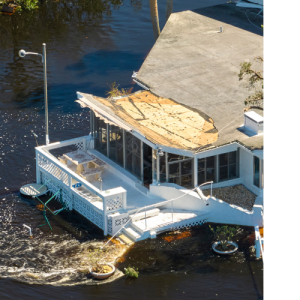
from past hurricane seasons with similar conditions can provide insights into potential impacts and the importance of preparedness. Comparing current predictions with past events helps highlight the severity of the anticipated hurricane season. For instance, the 2005 hurricane season, which included Hurricane Katrina, demonstrated the devastating impact of storm surges and flooding on New Orleans and the Gulf Coast. The 2017 hurricane season, with Hurricanes Harvey, Irma, and Maria, showed how multiple powerful storms in a single season can strain response resources and recovery efforts. By examining these past events, we can better understand the importance of robust emergency plans, resilient infrastructure, and effective communication strategies to mitigate the impacts of hurricanes.
In conclusion, the predicted increase in hurricane activity for the 2024 season presents significant challenges and risks. Coastal communities must prepare for the potential devastation of storm surges, flooding, and high winds. The economic repercussions will likely extend far beyond immediate damage, impacting businesses, tourism, and supply chains. Health and safety risks, along with long-term environmental impacts, underscore the need for comprehensive preparedness and response strategies. By learning from past hurricane seasons and implementing advanced solutions, we can better protect our communities and mitigate the effects of these powerful storms.
Challenges in Hurricane Preparedness and Response
Communication Breakdowns
Effective communication is crucial during emergencies. However, during hurricanes, communication networks can become overloaded, leading to delays and misinformation. Ensuring that accurate and timely information reaches all stakeholders is a significant challenge.
Overloaded Communication Networks: High volumes of traffic can congest communication channels, making it difficult to disseminate information quickly. The influx of calls, messages, and data traffic during an emergency can overwhelm networks, causing delays and failures in delivering critical information. This can result in vital instructions not reaching those who need them most, exacerbating the crisis.
Challenges in Disseminating Accurate Information: Inaccurate or delayed information can exacerbate the situation, causing confusion and panic among affected populations. Ensuring that all communications are clear, concise, and accurate is vital to maintain order and facilitate effective response efforts. Misinformation can spread rapidly, making it harder to manage the situation effectively. Establishing reliable communication protocols and systems is essential to mitigate these issues.
Coordination and Logistics
Managing the logistics of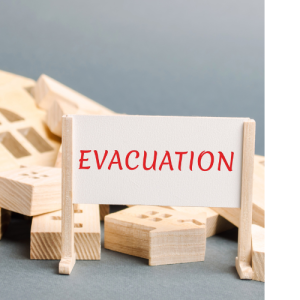 evacuations and emergency responses is complex, particularly during large-scale hurricanes. Ensuring that everyone is accounted for and that resources are efficiently allocated requires precise planning and execution.
evacuations and emergency responses is complex, particularly during large-scale hurricanes. Ensuring that everyone is accounted for and that resources are efficiently allocated requires precise planning and execution.
Managing Large-Scale Evacuations: Coordinating the evacuation of entire communities involves significant logistical challenges, including transportation and shelter arrangements. Ensuring that evacuation routes are clear, safe, and accessible is critical to the success of evacuation efforts. This requires detailed planning and coordination among various agencies and organizations.
Resource Allocation: Efficiently deploying resources, such as emergency personnel and supplies, is critical but challenging, especially when dealing with widespread impact areas. Prioritizing resources to areas of greatest need and ensuring equitable distribution can be difficult in the chaotic environment of a hurricane response. Effective resource management is essential to ensure that all affected areas receive the necessary support and assistance.
Infrastructure and Power Resilience
Ensuring that emergency systems function during prolonged power outages is a critical challenge. Robust infrastructure is necessary to withstand the impacts of hurricanes and maintain continuity of operations.
Ensuring Functionality During Power Outages: Emergency systems must be equipped to operate without power for extended periods, ensuring that critical functions continue without interruption. Backup power solutions and resilient infrastructure are essential to maintaining operational capabilities during and after a hurricane. This includes having reliable generators, batteries, and other backup systems in place.
Robust Infrastructure: Strengthening infrastructure to withstand hurricane impacts is vital to minimize damage and ensure quick recovery. Investing in resilient building materials, flood defenses, and wind-resistant designs can help reduce the vulnerability of infrastructure to hurricane damage. This involves upgrading existing structures and incorporating resilient design principles into new construction projects.
Data Management and Security
During hurricanes, managing and securing large amounts of data becomes a significant challenge. Ensuring that data related to emergency responses, resource allocation, and communication is accurate and secure is essential for effective disaster management.
Accurate Data Collection: Accurate and timely data collection is critical for effective decision-making during hurricanes. Ensuring that data is collected from reliable sources and is continuously updated is a significant challenge. This involves setting up systems for real-time data collection and ensuring that all relevant information is captured and recorded accurately.
Data Security: Protecting sensitive information from cyber threats and unauthorized access is crucial during emergencies. Implementing robust cybersecurity measures is essential to safeguard data and maintain trust among stakeholders. This includes ensuring that data systems are secure and that there are protocols in place to protect against potential breaches.
Real-Time Data Analysis: Analyzing data in real-time helps emergency management teams make informed decisions quickly. Integrating advanced data analytics tools can enhance the ability to monitor the situation, predict outcomes, and allocate resources effectively. This involves using sophisticated software and analytical tools to process and interpret data as it is collected.
HQE Systems’ Solutions for Hurricane Preparedness
Real-Time Alerts and Notifications
HQE Systems’ SiSA technology offers an advanced solution for emergency notifications, ensuring that accurate information reaches all stakeholders promptly. SiSA leverages multiple communication channels, including SMS, email, social media, and mobile apps, to provide comprehensive coverage.
SiSA’s Real-Time Alerts: This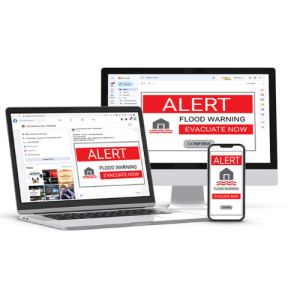 feature allows the system to send immediate alerts, which helps prevent the spread of misinformation and ensures that everyone receives the same accurate information. During a hurricane, timely communication is crucial for coordinating evacuations, providing safety instructions, and updating affected individuals about the storm’s progress.
feature allows the system to send immediate alerts, which helps prevent the spread of misinformation and ensures that everyone receives the same accurate information. During a hurricane, timely communication is crucial for coordinating evacuations, providing safety instructions, and updating affected individuals about the storm’s progress.
Multi-Channel Notifications: By utilizing multiple communication channels, SiSA maximizes the likelihood that messages will be received promptly, even if one channel fails. This redundancy is vital in disaster scenarios, where communication networks can become congested or damaged. The system’s ability to reach people through various platforms ensures that critical information is disseminated quickly and efficiently.
Advanced Risk Management
HQE Systems employs predictive analytics and AI-powered risk assessments to manage hurricane impacts proactively. These technologies help anticipate potential threats and implement measures to mitigate their effects.
Predictive Analytics and AI-Powered Risk Assessments: Using advanced data analysis, SiSA can predict potential hurricane impacts and provide actionable insights for proactive risk management. By analyzing weather patterns, historical data, and other relevant factors, the system can forecast the likely path and intensity of hurricanes, allowing for better preparation and resource allocation.
Proactive Measures to Mitigate Hurricane Impacts: Implementing anticipatory measures helps reduce the severity of hurricane impacts and enhances overall preparedness. SiSA’s capabilities include identifying vulnerable areas, planning evacuation routes, and pre-positioning resources. This proactive approach ensures that emergency responders and affected communities are better equipped to handle the challenges posed by hurricanes.
Comprehensive Emergency Management
SiSA integrates seamlessly with existing emergency protocols, enhancing the overall efficiency of emergency responses. The system’s automated verification processes ensure quick and accurate identification of individuals, reducing delays and errors in reunification efforts.
Integration with Existing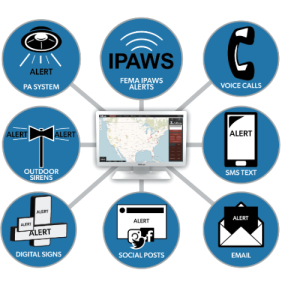 Protocols: SiSA works in harmony with current emergency management systems, streamlining the response process. By integrating with established protocols, the system can coordinate various aspects of emergency management, including communication, resource deployment, and response coordination. This integration ensures a unified and efficient approach to managing hurricane-related emergencies.
Protocols: SiSA works in harmony with current emergency management systems, streamlining the response process. By integrating with established protocols, the system can coordinate various aspects of emergency management, including communication, resource deployment, and response coordination. This integration ensures a unified and efficient approach to managing hurricane-related emergencies.
Automated Verification Processes: Automating the verification process ensures that only authorized individuals are reunited, speeding up the reunification process and reducing errors. During hurricanes, verifying the identity and status of individuals is critical for ensuring their safety and well-being. SiSA’s automated processes reduce the time and effort required for verification, allowing emergency responders to focus on other critical tasks.
Power Outage Preparedness
HQE Systems’ solutions are designed to function without power for extended periods, ensuring continuity of operations during power outages. This feature is critical for maintaining emergency communications and responses when the power grid is compromised.
Functionality During Power Outages: SiSA’s design ensures that emergency systems remain operational even without power, providing continuous support during extended outages. The system includes backup power solutions, such as batteries and generators, to maintain functionality. This ensures that critical communications and emergency management processes can continue uninterrupted, even in the absence of external power sources.
Ensuring Continuity of Operations: Maintaining the functionality of critical systems during power outages ensures that emergency responses are not hindered by a lack of power. SiSA’s robust design includes redundancies and fail-safes to keep essential services running. This capability is crucial during hurricanes, when power outages can be widespread and prolonged. By ensuring continuity of operations, SiSA helps maintain order and safety during and after the storm.
HQE Systems is a certified Veteran Owned Company. For more information about HQE Systems Inc. and its emergency management, electronic security, and integration solutions, please visit www.hqesystems.com.

Contact: David Ditto (Early Warning Systems Subject Matter Expert)
Email: David.Ditto@hqesystems.com
Phone Number: (843) 872-7020
____________________
HQE Systems, Inc. | HQE is a Minority-Owned Service Disabled Veteran Owned Small Business (SDVOSB) providing full solutions for: Mass Notification Systems, Electronic Security Systems, Software Development Services, Contract Support, and Prototyping Services. As a brand-agnostic solutions provider, HQE prides itself in providing the BEST solution for the project. HQE possesses over 30+ factory certifications and reseller licenses to ensure our clients receive the highest quality service at the ideal budget. HQE can provide full design, installation, integrations, upgrades, and long-term maintenance support for any size and scope project.

